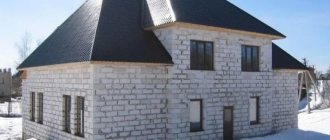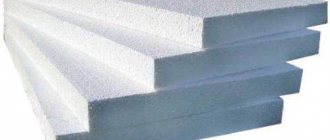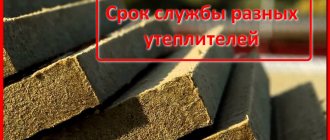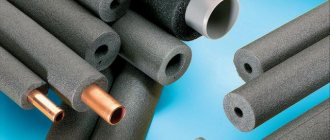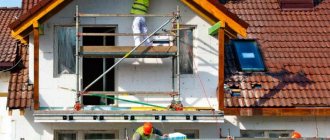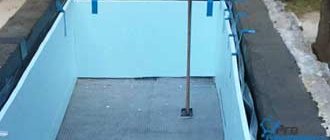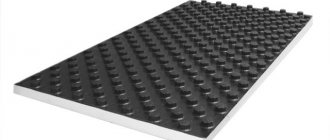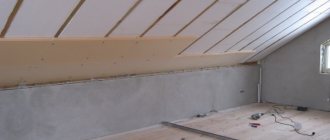Foamed polystyrene (or polystyrene foam) is one of the most popular building materials used for insulating houses, and not only. There is a very high demand for it, because this insulation has excellent characteristics: both heat and sound insulation, and is not susceptible to climatic and radiation influences.
So, what is expanded polystyrene? These are plates that consist of special granules; they fit tightly to each other, thereby preventing cold and unnecessary sounds from passing through, and reliably protecting the building. Polystyrene foam granules, the size of which ranges between 3-10 mm, are formed into plates by exposure to high temperatures. They are 98% air, and 2% polystyrene. There are no foreign inclusions!
Advantages of foamed polystyrene
If you want to use foam polystyrene boards for insulation, then you need to know about all its pros and cons.
Advantages of foamed polystyrene:
- Has a high level of thermal insulation;
- Resistant to moisture;
- Relatively low price of the material (when compared with other insulation materials);
- Fire safety (contains a fire retardant that prevents the spread of fire);
- It differs from other materials in its durability and strength;
- Resistant to a wide variety of chemical and biological influences;
- Easy to handle (due to its low weight).
Production of expanded polystyrene using the pressless method
Expanded polystyrene produced by the pressless method - styropor - is a product of block-suspension polymerization of styrene , which occurs in two stages.
- At the first stage, prepolymerization is carried out using the styrene-block method in apparatus with stirring until the conversion is 25-40% .
- In the second stage, the final polymerization of the prepolymer occurs in a suspension manner ; at this stage, 3–6% of a highly volatile liquid hydrocarbon (isopentane or isopentane fraction) by weight of styrene is introduced into the polymer.
The most appropriate is the block-suspension method for producing polystyrene foam using a mono-hardware scheme , that is, carrying out prepolymerization and final polymerization in one apparatus of high unit capacity (volume 100 m 3 or more). In this case, the technological scheme for producing expanded polystyrene is similar to the technological scheme for producing suspension polystyrene .
Suspension polymerization is carried out in an aqueous medium (bath modulus 1: 1) in the presence of radical-type initiators ( benzoyl peroxide or dinitrile azobiisobutyric acid ).
Increasing the bath modulus to 5:3 (as in the production of suspension polystyrene) is unacceptable due to significant adhesion of the product to the walls of the reactor and the stirrer, which leads to the production of a non-standard product in terms of particle size distribution and a significant deterioration in heat transfer in the reactor.
To produce expanded polystyrene in reactors with a volume of 20 m3, six-bladed, sheet and turbine mixers are recommended. For a reactor with a volume of 100 m 3, a specially designed three-bladed mixer with an adjustable rotation speed from 10 to 60 rpm and a power of 100-150 kW .
Heat removal at the stage of block prepolymerization in a reactor with a volume of 100 m 3 is carried out due to the evaporation of styrene vapor or water vapor added to the reaction mass in an amount of 2%.
Heat removal at the suspension polymerization stage is carried out through the wall of the polymerizer jacket with a bath module of 1:1.
Control of reactor operation at the prepolymerization stage with heat removal through the jacket is ineffective; At the stage of suspension polymerization, control can be carried out, as in the case of suspension polymerization of general purpose styrene, using conventional automation equipment.
The technological process of periodic production of polystyrene for foaming using the block-suspension method consists of the stages:
- preparation of raw materials (preparation of an aqueous solution of polyvinyl alcohol, dissolution of the initiator in styrene);
- prepolymerization of styrene in bulk;
- suspending the prepolymer in an aqueous solution of a stabilizer;
- final polymerization,
- centrifugation,
- drying granules,
- sifting and packaging of the finished product.
The final suspension polymerization of styrene is carried out in an autoclave with continuous stirring at 70 °C and a pressure of 290-580 kN/m2 for 16-20 hours . Isopentane or isopentane fraction is loaded into the autoclave before the final polymerization begins. A 1% aqueous solution of polyvinyl alcohol is used as a suspension stabilizer
Difficulties in carrying out a continuous process are associated with insufficient stability of the suspension.
Polystyrene for foaming can also be obtained by suspension polymerization of styrene in an aqueous medium with the introduction at the end of the process (after reaching 70-75% concentration) of a foaming agent - hexane, pentane.
The technological process of manufacturing products from expanded polystyrene using the pressless method consists of the stages:
- preliminary foaming of granules;
- drying and air conditioning of pre-foamed granules;
- final foaming of granules.
Expanded polystyrene is produced in a continuous process directly from the monomer , while the processes of styrene polymerization and foaming are combined. The dinitrile azobiisobutyric acid (porophore) used in the process is simultaneously:
- initiator of styrene polymerization;
- foaming agent.
The technological flow diagram of the process for producing polystyrene foam in a continuous manner is shown in Figure 1.
Picture 1
From mixers 1, the solution of porophor in styrene is fed into the supply container 2 , in which it is heated to 60-75 ° C , and then, under a pressure of 980 kPa it is pumped by pump 3 into the polymerizer 4. The polymerizer is a tubular-type apparatus, divided into sections. The temperature in sections increases from 80 to 100 °C . In this case, a polymerization column can also be used. Next, the reaction mixture enters a worm press 5 , in which it is heated to 120–140 °C. In a worm press, the blowing agent is completely decomposed and distributed evenly in the material. In addition, the worm press regulates the flow of material into the gradually expanding mouthpiece , in which foaming occurs. Mouthpieces of various shapes make it possible to obtain solid or hollow products.
In this way, polystyrene foam of the PS-A brand with a fine-porous closed-cellular structure was obtained. By adding fire retardants, non-flammable polystyrene foam PS-A can be obtained
The production of large-sized products using this method is difficult due to the limited size of the worm press.
Using this scheme, you can also obtain polystyrene foam PSV (pressless). To do this, a head with holes is installed on a worm press, forming thin polystyrene threads, which are cooled and crushed into granules.
Types of foamed polystyrene and their differences
There are two main types of polystyrene foam: block and extrusion. It should be noted that extruded polystyrene foam is more modern and improved. It is not only a good insulator, but also an environmentally friendly material. The production of foamed polystyrene (extruded) occurs as follows: under pressure and high temperature, all components are passed through specialized equipment, forming slabs and blocks. As mentioned above, they contain only air and polystyrene, so you can immediately exclude the toxic effect on the human body of chemical compounds that are sometimes present in other insulation materials.
Technological advantages
The described material combines strength and lack of fragility; in addition, it is lightweight, which provides advantages during its installation. Expanded polystyrene is quite easy to process; to do this, it will be enough to use a handsaw or a regular knife. With the working surface of such tools you can easily saw it.
Quite often, when carrying out construction work, the weight of the material is taken into account, since it can place additional load on the foundation of the building. Lightweight polystyrene foam boards do not have this disadvantage. This not only simplifies the work, but also does not involve strengthening and strengthening the base if the work is carried out in the facade area. During construction, you will not need to think about building a powerful foundation. If the slabs are used in tandem with a layer of plaster, they will slightly increase the outer perimeter of the building, which indicates that there will be no need to expand the roofing system. After all, it is very labor-intensive and costly.
Foamed polystyrene in other industries
In addition to the fact that foamed polystyrene is widely used for insulation and sound insulation in construction, other things are also made from this material. For example, trays made of foamed polystyrene. In the last decade they have become extremely convenient, especially in trade, for packaging. You can put anything in them! Most often these are food products. But foamed polystyrene plates are also used to protect large household appliances from scratches - whatever one may say, this is the most reliable packaging. In addition, it does not emit toxins and has a very affordable price. This is why polystyrene foam trays are so often used.
From all of the above, we can conclude that foamed polystyrene is a unique material that is used for a wide variety of purposes. Its positive qualities and reviews attract more and more buyers every year.
The need for sun protection
Expanded polystyrene should not be used if its surface may be exposed to direct sunlight. What is the reason for this? The material can be destroyed under the influence of ultraviolet and x-ray radiation, as well as significant temperature. If you use expanded polystyrene as an external insulating layer for walls, then it will definitely need to be protected with plaster, which is applied to a special reinforcing mesh. This, of course, increases the cost of the work. Regular paint can be applied over the insulating material. This technology will not provide an interesting solution for the facade, but it will be a profitable and effective approach to carrying out insulation and repair work.
This material cannot be used when constructing a well-type insulation system. It is permissible to attach any type of insulation after the vapor barrier layer. This indicates that first you will need to fix the vapor barrier and only then proceed to attaching the insulation layer.
Installation Tips
A guarantee of the effectiveness of thermal insulation is compliance with all stages and rules of installation work.
- Before installing penoplex, you need to prepare the surface on which the material will be laid. A non-uniform surface with cracks and dents must be sealed with a plaster mixture. If there is debris, loose elements and remnants of old finishing, then the interfering parts are removed.
- If traces of mold and moss are detected, the affected area is cleaned and treated with an antiseptic fungicidal mixture. To improve adhesion to the adhesive composition, treat the surface with a primer.
- Penoplex is a hard, inflexible thermoplastic that is attached to flat surfaces. Therefore, the level of evenness is measured. If the difference exceeds more than 2 cm, then leveling will be required. The technology for installing heat insulators differs slightly depending on the surface design - for the roof, walls or floor.
- Installation of thermal insulation can be carried out at any time of the year, but it is more comfortable if the temperature is above +5 degrees. To fix the slabs, special adhesives based on cement, bitumen, polyurethane or polymers are used. Facade mushroom-shaped dowels with a polymer rod are used as additional fastenings.
- Installation on walls is carried out using the horizontal method of placing slabs. Before installing the penoplex, you need to place a starting strip so that the insulation is in the same plane and the rows do not shift. The bottom row of insulation will rest on the bottom bar. The heat insulator is attached to glue in a checkerboard pattern with the grooves aligned. The adhesive composition can be applied in strips of 30 cm or in a continuous layer. Be sure to coat the connecting edges of the panels with glue.
- Next, holes are drilled to a depth of 8 cm. For one sheet of penoplex, 4-5 dowels are enough. Install dowels with rods, the caps should be in the same plane with the insulation. The last step will be decorative finishing of the facade.
- When insulating the floor, foam plastic is laid on a reinforced concrete floor slab or prepared soil and secured with glue. A waterproofing film is laid on which a thin layer of cement screed is applied. After complete drying, the final floor covering can be installed.
- To insulate the roof, penoplex can be laid on the attic floors above or below the rafters. When constructing a new roof or repairing a roof covering, a thermal insulator is installed on top of the rafter system. The joints are sealed with glue. Longitudinal and transverse slats 2-3 cm thick are attached to the insulation in increments of 0.5 m, forming a frame on which the roofing tiles are attached.
- Additional roof insulation is carried out inside the attic or attic space. A sheathing frame is mounted on the rafters, on which penoplex is placed, secured with dowels. A counter-lattice is installed on top with a gap of up to 4 cm. A layer of vapor barrier is applied, followed by cladding with finishing panels.
- When insulating foundations, you can use the technology of permanent formwork made from foam panels. To do this, assemble the formwork frame using a universal screed and reinforcement. After pouring the foundation with concrete, the insulation remains in the ground.
For an overview of the comparison of penoplex with other materials, see the following video.

